Blog
Welcome to Spain: an alternative Grand Tour for the 21st century

As beams of Renaissance light began to illuminate the so-called ‘Dark Ages’ and a more enlightened continent began to emerge, the young noblemen of northern Europe became history’s first great tourists, experiencing for themselves all that was so grandly illustrated in the books of their extensive libraries.
The devout pilgrimages of medieval Europe gave way to big-budget voyages of pleasure; education replaced absolution; self-improvement trumped sacrifice. It was the birth of the Grand Tour, of a new kind of pilgrimage, and of cultural tourism as we know it.
Aristocrats “with a thorough grounding in Greek and Latin literature, some interest in art, and very healthy financial resources” began to undertake protracted journeys to the classical heartland of Europe. After a brief stop in Paris, it was the Italian cities of Venice, Rome, Florence and Naples which formed the backbone of the 17th and 18th century sojourns.
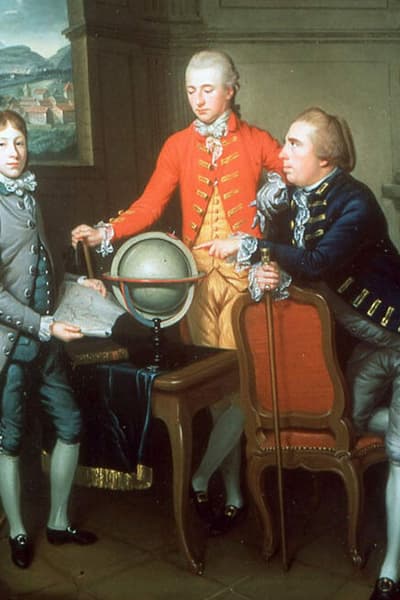
They came to admire Renaissance art and architecture, to explore what remained of the Roman empire, to absorb the intricacies of ancient philosophy and generally acquire a lifetime of anecdotes, insights and claims to fame to ensure they never found themselves without a tale to tell at dinner parties.
The Grand Tour that never was
But Italy wasn’t just the classical heartland of Europe, it was also the centre of Catholicism. And given that the main protagonists of the Grand Tour were the elite of Protestant Britain, the very notion of the tour was steeped in unpatriotic sentiment.
According to Jeremy Black, Professor of History, University of Exeter, a journey to Italy was akin to “Americans wanting to go on tour to Moscow in the 1950s”.
So Italy was frowned upon, but fresh from a war with Spain, the other great Catholic powerhouse and great enemy in the battle to colonise the New World, to visit the Iberian Peninsula was too much. Thus, a country that for centuries provided one of the three great pilgrimage routes, fell from the world stage.
The Napoleonic Wars brought the Grand Tour to a shuddering end. And whilst steamboats and railways brought new mobility to a wider audience, Spain never had a horse in the race. It wasn’t until the 1950s, with the country under the grip of a dictatorship, that tourism got going down on the Costa del Sol. Resorts were thrown up haphazardly along the southern coast, heavily promoted to an audience of empowered and eager international travellers. With the Olympic Games and World Fair bringing the gaze of the world in 1992, and the rise of low fare airlines and package travel, Spain never looked back.
But you can’t help feeling that Spain never had the chance to properly introduce itself to a class of travellers more inclined towards culture and history, those who would have more of an interest in its Alhambra Palace and Camino paths than its swimming pools and sun loungers.
Spain was a Grand Tour waiting to happen, but the tourists never came.

Fortunately, such grand journeys are no longer the sole preserve of the elite. Local people, not private tutors, are now the guardians of their own culture and meeting them does so much to enrich our travels. Artistic expression is no longer confined solely to solemn galleries. The countryside is something to celebrate and enjoy, rather than regard with fear and loathing as it was back then.
Spain: an alternative Grand Tour for the 21st century
So, with all the enthusiasm of a proud Spaniard, and all the experiences of my own not-so-grand tours around my homeland, allow me to introduce an alternative Grand Tour for the 21st century – a month of wonders in Spain, for you to adapt to your own interests, ideas and timeframes.
If you want a whistlestop tour of the route, or if you would like to do some or all of the journey yourself, you can have a look at our Great Road Trips: Spain's Month of Wonders itinerary. I encourage to get in touch if you are interested in doing something - we like to be helpful and love planning trips with you.
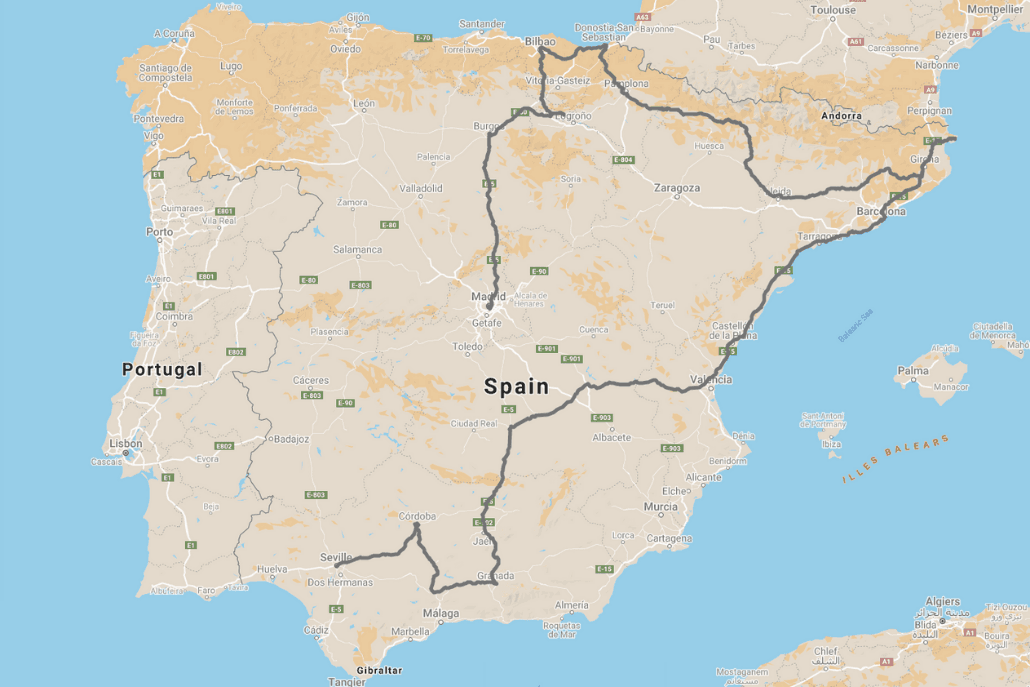
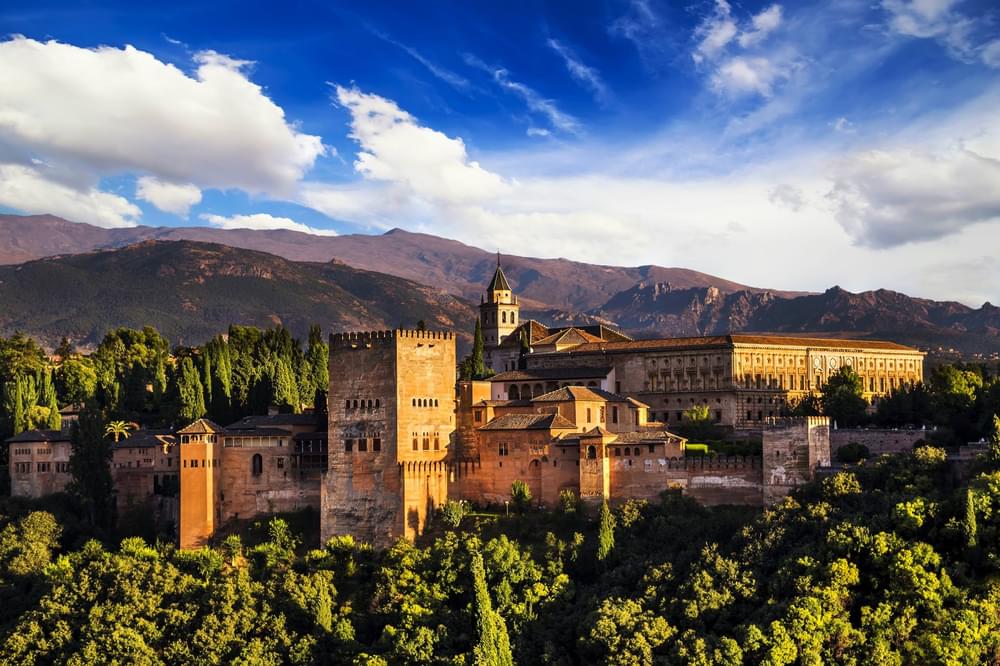
1. A modern masterpiece in Madrid
As the popularity of the Grand Tour grew, art became the central pillar around which most journeys unfolded, be it to trade, find inspiration or learn from the classical masters. And whilst there’s no doubt that Italy is home to most of the artists who defined the Renaissance period of European art, many of their works of art actually hang in the Spanish capital.
In the time of the Grand Tour, Spain was often by far the most powerful and rich country in the world. Nowhere is that more apparent than inside Madrid’s Prado Museum, where masterpieces from the Italian Renaissance era – from painters such as Fra Angelico, Mantegna, Tiziano, Tintoretto, Rafael, Parmigianino and Correggio - hang under the same roof as those from Spain’s own pantheon of great classical painters like El Greco, Velazquez and Goya.
But if the Prado is all about celebrating the old, the nearby Reina Sofia is all about showcasing the modern. There’s a reason why the metro stop between them is called the ‘Estación del Arte’ after all. It’s here in the Reina Sofia that you can admire the work of two of the most distinctive and celebrated artists of the 20th century – Pablo Picasso and Salvador Dalí. And if you only see one piece of artwork during your time in Spain, let it be Picasso’s Guernica.

Commissioned to paint a monumental work for the Spanish pavilion at the 1937 Paris World Fair, Picasso chose the catastrophic Civil War bombing of the Basque market town of Guernica as his controversial subject. In just six weeks he created the most important painting of the 20th Century.
The work caused a sensation in Paris before going on to tour Europe and America to raise funds for refugees from the Civil War, not returning to Spain until after Franco’s death and the country’s return to democracy.
Seeing it for yourself is a deeply moving experience and a rare chance to peer directly into one of the darkest times in Spanish history.
Make it happen: Great Road Trips: Spain's Month of Wonders
2. Caminos & Catholicism in Castile
From Romans to Moors to Christians to the New World and Civil War, Spain’s history is as storied and vivid as any. Back in the days of the Grand Tour, much of it was still pretty contemporary too. Trouble is, or trouble was, Catholicism was hardly all the rage in northern Europe and so Spain was very much off the agenda.
Add to that the decline in popularity of the Camino de Santiago by the 17th century and the small matter of the barrier of the Pyrenees mountains lined up along the border and there was seemingly little reason to venture all the way down here.
None of that stops you coming here though in the 21st century, thankfully.
Pushing on north from Madrid, we’re into the old Kingdom of Castile – the real heartland of catholic Spain. And the heart of catholic Castile was always Burgos, its capital and now a UNESCO World Heritage site. Whether you'd like to walk a section of the Camino whilst here or not, there is no better place than Burgos to get to grips with one of the most tumultuous eras of Spanish history, one that would go on to define the country we have today, and to understand the importance of the Camino in European history.

In 711 the Umayyad Caliphate pushed up from North Africa and crossed the Straits of Gibraltar to occupy the Iberian Peninsula and begin seven centuries of Islamic occupation. Where the Straits once separated the two worlds, Spanish land was now the borderland of Christian Europe and would remain so until the Reconquest was completed in 1492.
For some time, that border was right up against the mountains of the north. But as the Christians eventually regained a foothold, they pushed the border further south, opening up pilgrimage highways, first on the coast and then inland, along which Christians could undertake epic journeys of hundreds of miles to come and visit the newly discovered remains of St James in Santiago de Compostela.
The Camino de Santiago quickly became the most important cultural highway in European history. It was along the Camino that knowledge was drawn out of Moorish Spain and fed into the dark ages of northern Europe. And it was along the Camino that the art and culture of medieval Europe flowed down into Spain and architectural styles spread, linking the great Romanesque and Gothic churches you can admire in cities such as Burgos with the wonderful stained-glass windows of Chartres cathedral in France.

Whilst in Burgos, it would be remiss not to suggest a visit to one of Spain’s, indeed Europe’s, greatest museums – the Museum of Human Evolution. Spread over four floors, the most important level showcases the remarkable archaeological treasures of the nearby Sierra Atapuerca cave system, where they are excavating over a million years of human presence, including modern humans and the fossils of their ancestors. This is the oldest evidence of humans in western Europe.
Just imagine what the Grand Tourists would have made of that...
Make it happen: Great Road Trips: Spain's Month of Wonders
3. Rioja Reservas in the Basque Country
The original tourists weren’t all that keen on the countryside. They seemed to take comfort in being in big cities and preferred to move through the rural areas as quickly as possible en route to their next home from home.
I implore anyone with any ideas about coming to Spain not to take this approach. Quite why the Renaissance travellers were so keen to get to Florence when Tuscany was so close, I’m not sure. Anyway, we don’t have to follow their approach to the letter on our 21st century tour.
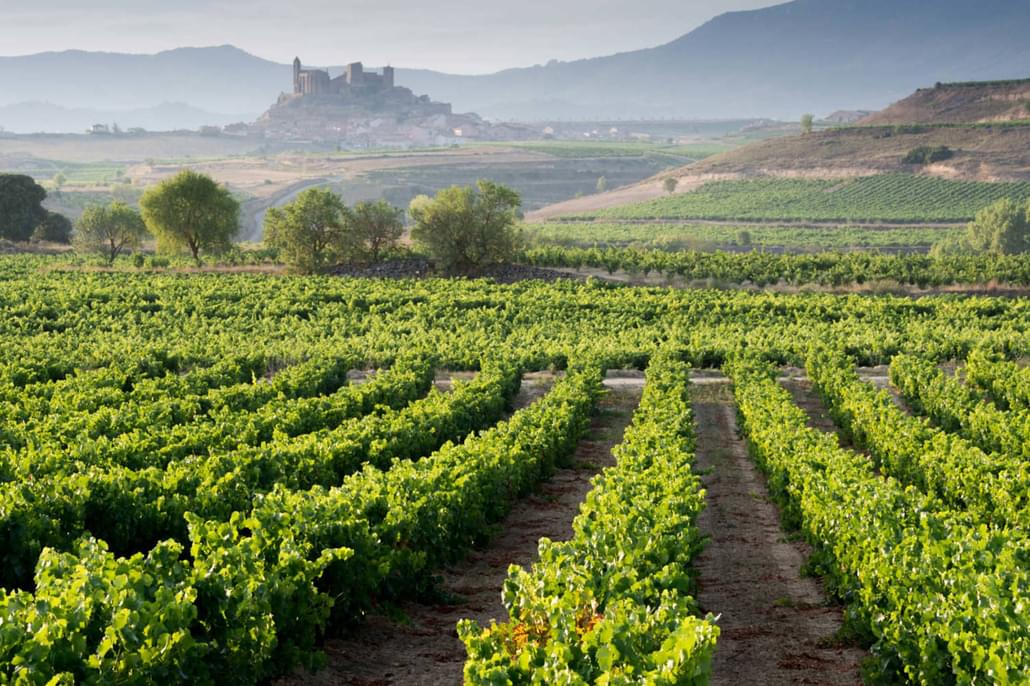
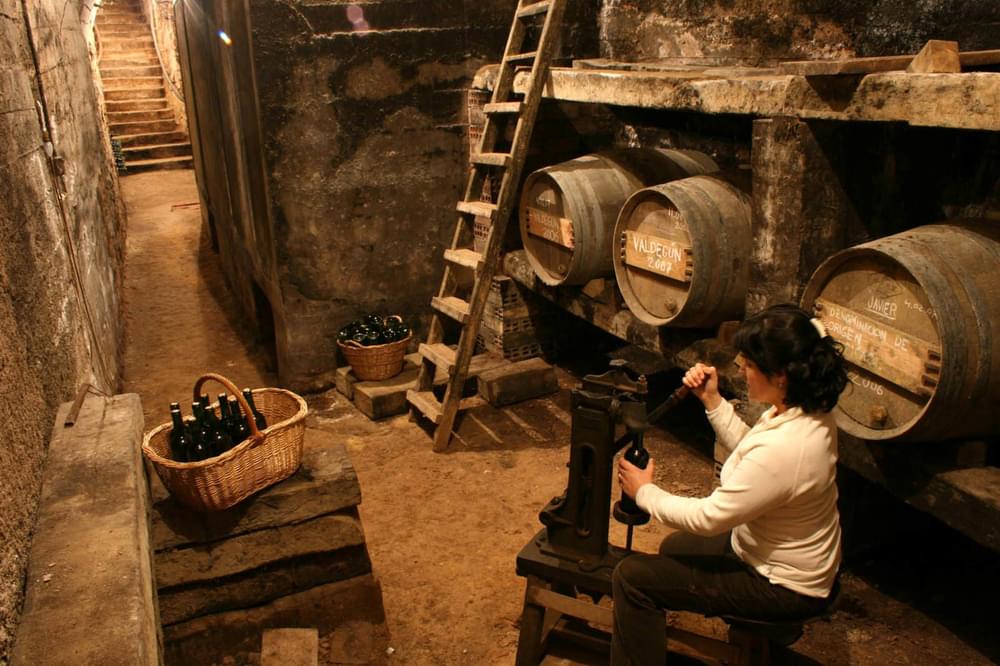
It’s not clear where the idea first germinated, but we often see La Rioja described as the ‘Spanish Tuscany’. As full of good-intention and complimentary spirit as they no doubt are, we can’t help feeling it does La Rioja a bit of a disservice. After all, the convergence of mountain ridges, poppy fields, thick forests, open valleys, hilltop villages, ruined castles, Roman bridges, the meandering path of one of the Iberian Peninsula’s great rivers and all those sunny vineyards hardly warrants the need to hitch Rioja’s wagon to its Italian contemporary in an awkward attempt to bask in its reflected glory.
So let’s not go there - it’s La Rioja, nada más.
Between the Pyrenees mountains to the north and the high plateau to the south, Mediterranean and Atlantic climates blend to create optimum conditions for producing some of the best medium body wines in the world.

As you take a slow savouring sip on a deep ruby-red Rioja, its big oaky, plum and vanilla flavours lingering on the palette, and as you toast the moment with a loved one on a sunny balcony overlooking uniform rows of centuries-old, centuries-revered, centuries-cultivated vines, you begin to understand that, when sampled in-situ, wine is about so much more than what ends up in your glass.
Wine forms landscapes, wine influences culture, wine powers an economy. It creates moments shared with others and encourages you to take some time to slow right down and appreciate one of life’s great pleasures in the simplest of ways.
How's that for a bit of amateur philosophy, Rioja style?
Make it happen: Great Road Trips: Spain's Month of Wonders
4. Pyreneean peaks in Aragón
If the Grand Tourists showed a certain apathy towards the countryside, they reserved their greatest horror for the mountains. Having to pass over the Alps was an adventure few relished, but as someone who spends so much of my time hiking or guiding in the mountains, I’m not sure I’d have got any further south than the Alps. I’d have been a terrible tourist!
But if the spirit of the Grand Tour was to see through your own eyes the stories and explanations given in books, I can’t imagine anywhere better to experience a geography lesson than the Pyrenees. These mountains certainly deserve a place on our grand tour.

Standing at the top of the Ordesa Valley, you can look all the way down the hillsides to the forests below and see a picture-perfect example of a glacial U-shaped valley. With some imagination and guidance, you can see where the limestone rocks were pushed from the bottom of ancient seas to the top of the Pyrenees, then eroded over millennia by immense glaciers and then by water.
The forces of nature have left us with ‘alpine’ landscapes of high peaks, beautiful blue lakes, fast-flowing rivers and thick forests of beech, ash and pine, connected with some of the best hiking trails I have ever experienced.
Make it happen: Great Road Trips: Spain's Month of Wonders
5. Seafood and sun on the Costa Brava
Traversing the length of the Pyrenees, the great barrier to the rest of Europe, we trace the peaks all the way to the Mediterranean Sea, where they sink into the water at Cap de Creus Natural Park, the easternmost point of mainland Spain.
Like much of the Mediterranean coastline, a lot of Spain’s Costa Brava has been a bit spoilt by badly managed mass tourism and thoughtless development. But there are some pockets of the coast which still feel uniquely Catalan and retain their original Mediterranean charm. This area around Cadaqués and Cap de Creus is absolutely one of them.
I love just being here, walking along the quiet coves, taking a cooling dip in the azure sea and then settling down to a late lunch of fresh prawns and a cold beer looking out over the boats bobbing in the harbour, surrounded by its sights, sounds and smells.

Back in their day, the Grand Tourists wouldn't have liked it though – it wasn’t until the 19th century that the idea of ‘sublime’ beauty began to become fashionable and therefore a priority for travellers. I can’t imagine such simple pleasures floated their boats, nor that they were encouraged by their 'cicerone' tutors.
But had they been born into our times, they’d have had reason to come here in the form of Salvador Dalí, one of the most charismatic and recognisable artists of our age. I can only imagine the fun they’d have had trying to interpret his surrealist work at the exact place where he lived, walking through the scenery and enjoying the natural light that inspired him so much.
For the rest of us, we can blend the Dalí heritage – the fun museum in Figueres and a visit to his home next to the olive groves in Port Lligat - with the simple and relaxed enjoyment of these beautiful landscapes, and all the trappings they bring with them.
Make it happen: Great Road Trips: Spain's Month of Wonders
6. Modernism and Michelin-stars in Barcelona
In the space of a couple of days in Catalonia, it’s possible to immerse yourself in the work of artistic movements as diverse as Dalí’s surrealism, Picasso’s cubism, Gaudí’s modernist architecture and even the haute cuisine of the Adriá brothers and their fellow Michelin-starred chefs.
As I said before, art doesn’t have to be confined to gallery walls. But by now we know that Grand Tourists do have to be confined to big cities. So they’d be back in their element in Barcelona, not least with the work of Gaudí to fawn over.
At the time of the expansion of Barcelona in the late 19th and early 20th century, grand, pleasant houses were being erected throughout the entire new city. But there was basically no variety in the architecture. Then, dotted about the Eixample area, came a series of architectural cuckoos, designed by a group known as the Modernists. What they created are still some of the most extraordinary and unusual architectural masterpieces in the world. A hundred years on, they still look groundbreaking.
In 2002, the year of Gaudí was announced and suddenly all of Barcelona woke up to the delights of the genius in their midst.

It’s taken less time to truly appreciate the culinary genius of Catalonia’s great chefs. Some, most notably the Adriá brothers, have achieved international acclaim and Michelin stars, whilst many others just go about their business of serving up delicious Mediterranean cuisine blended with the strong culinary influences of the region. ‘Mar i muntanya' (‘Sea and mountains’) doesn’t just describe the varied landscapes you explore in this corner of Spain, it’s a clue about what will end up on your dinnerplate.
Both in Barcelona and further afield in Catalonia, food will be a highlight, that much I can promise.
Make it happen: Great Road Trips: Spain's Month of Wonders
7. Moorish monuments in Andalucía
And finally, we arrive in Andalucía. One of the great pities of the Grand Tour must be that they never got to come to one of the most illustrious and influencial corners of Europe, where empires rose and fell, mingled and quarreled, where some of the world's greatest minds gathered and where some of the most precious examples of architectural craftsmanship can be enjoyed in palaces, mosques and fortified citadels.
Take Córdoba for example, the first capital of Moorish Spain...
At a time when Europe was supposedly languishing in the Dark Ages, Córdoba was the largest and richest city in the world. It was also the cradle of learning and the Arabs were the first great culture to cultivate the learning that had gone before. Rather than try to expunge previous civilisations and cultures, the Moors gathered them all together, translated them and got to work. The great library of Córdoba was said to contain 100,000 volumes in the 10th century.
It was here that Aristotle’s works entered the European bloodstream, and where Averroes developed the concept of secular thought. Philosophy, astronomy, anatomy, botany, theology and algebra were all developed, recorded and refined before being handed on to Western thinking. Of course, the great irony being that western history has largely written out the role of the Moors in an act of spectacular ungratefulness.
Along with Granada’s Alhambra and Seville’s Royal Alcázar, Córdoba’s Mezquita now forms part of the great triumvirate of must-see Islamic monuments. At its peak, the mosque was large enough to accommodate 20,000 people, rivalling the great mosque of Damascus for its scale and importance.
However, one of the great tragedies of the Mezquita is that, following the Reconquest, the Christians came along and built a soaring baroque cathedral right in its heart. Carlos V perhaps put it best when he castigated the bishop responsible: “You have built what you or others might have built anywhere, but you have destroyed something that was unique in the world.”
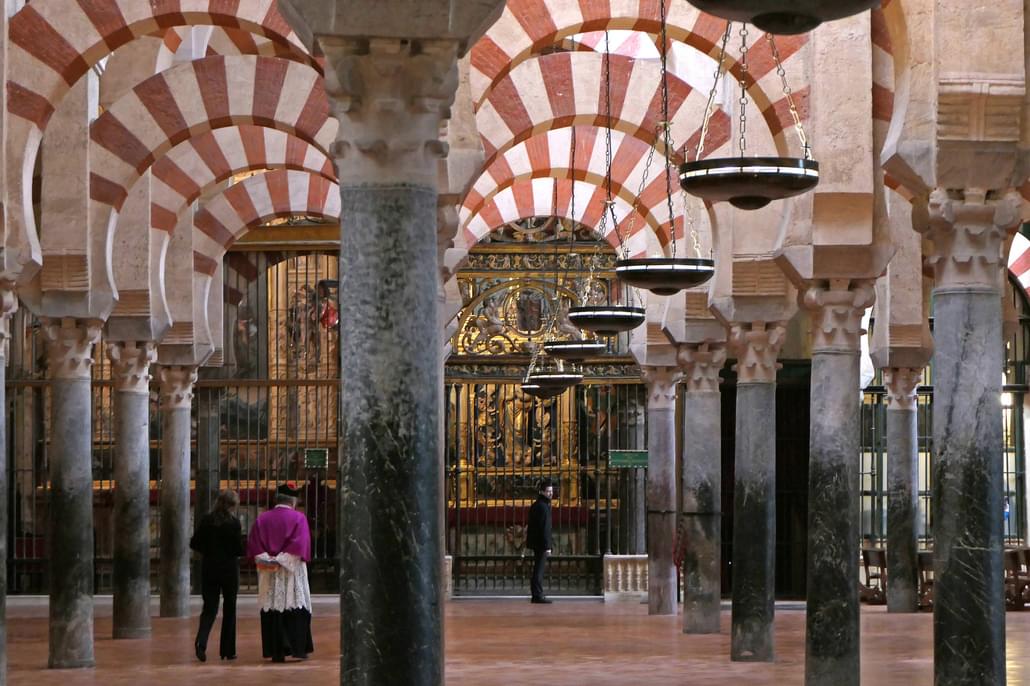
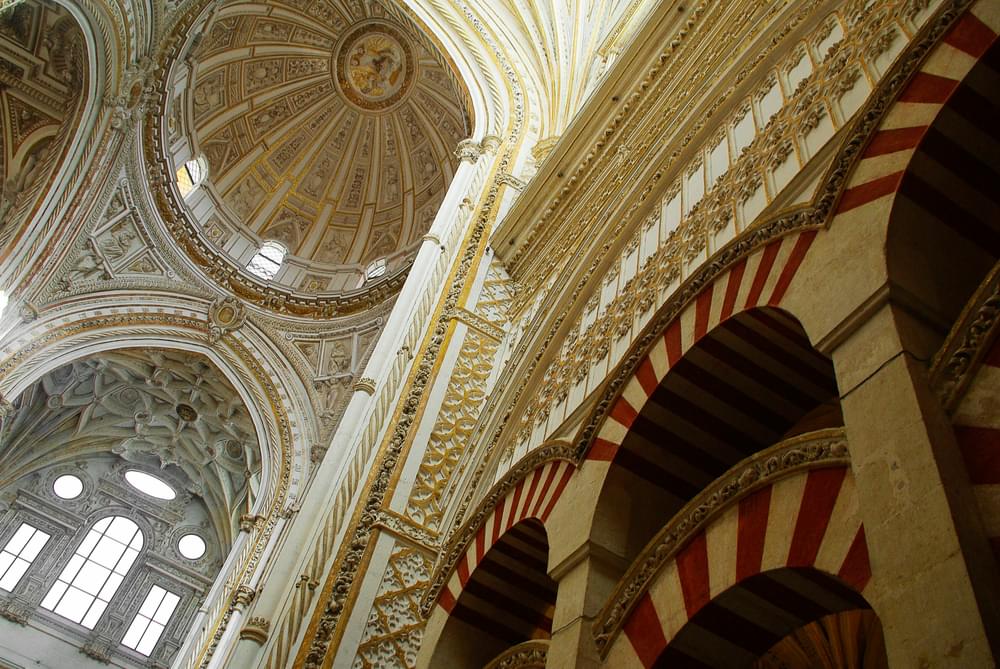
But as well as arguably saving the mosque from demolition, the cathedral does serve to highlight the differences in the styles of the two faiths. The church soars vertically towards God, everything drawing the eyes up - the rigid separation of priest and people, the high adornment of the baroque period. The mosque meanwhile is entirely horizontal. There is no separation between priest and people. No adornment on the walls. The only highly decorated area is the Mihrab where the Koran was kept.
It is the perfect symbol for an Andalucía that has grown from a mix of these two worlds, built on a foundation of Roman occupation that is still visible today in the substantial remains of two great Roman cities - Itálica to the north of Seville and Baelo Claudia looking over the Straits of Gibraltar on the Costa de la Luz.
With all this history, learning, art, architecture and change converging all around them, the tourists would have had so much to detain them here that they might never have even made it to Italy!
Make it happen: Great Road Trips: Spain's Month of Wonders
A Grand Tour made grander still
Whether you make it to Italy on your own Grand Tour is your call. But if you do want to spread your horizons beyond Spanish borders, might I suggest you dedicate some time to exploring the other part of the Iberian Peninsula – our neighbours over in Portugal.
Beyond the colourful and photogenic cities of Porto and Lisbon are some of the most beautiful areas of Europe you could wish for. The winemakers of the Douro Valley, the farmers of Minho’s mountain terraces, the cork harvesters of the Alentejo plains and the fishermen of the wild Costa Vicentina have all left their mark on the land and created a collection of contemporary living landscapes for us to discover and enjoy. Interspersed are hilltop castles, Roman monuments and Iron Age grain stores which take the story of Portugal back to different civilizations, different times.

Added to Spain, you could create a self-drive holiday of seven weeks or more, or less if you don't have the luxury of so much time to play with. We have plenty of options to make it work for you.
Whilst we're not the people to share it with you, Spain also connects well with France of course, with a high-speed train connection from Paris to Girona or Barcelona. And if you'd also like to visit the UK on your own Grand Tour of Europe, we recommend taking the overnight ferry between the south of England and Bilbao or Santander on the northern coast of Spain. But as I hope I've shown, there's more than enough to enjoy on the Iberian Peninsula alone!
Please do get in touch if you'd like to discuss your own Grand Tour and we'll help you plot a route across Spain, and Portugal too if you like.
Thank you for reading.
Make it happen: Great Road Trips: Spain's Month of Wonders







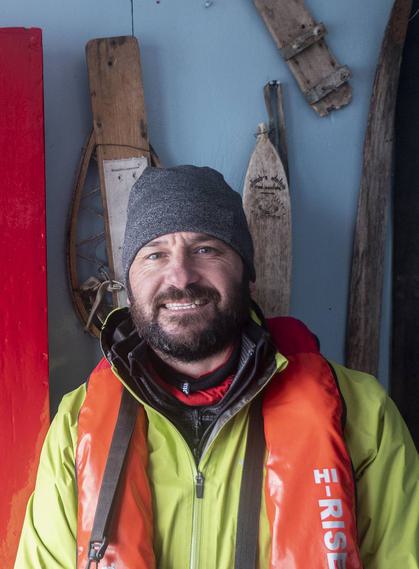
 By
By 

